In Part 1, Enhancing Fitness Without Compromising the Methodology, we discussed the background of accessory work, when accessory work would be useful, common muscle groups and movement patterns to target, and pitfalls commonly seen when implementing accessory exercises. In this article, we will dissect several troublesome movements and a few accessory exercises that can aid in targeting the weak links of these movements. This is not meant to be an exhaustive list; a simple internet search can provide you with many more options to incorporate.
Keep in Mind
Regardless of what social media tells you, it is important to remember that incorporating accessory exercises should NOT be the focus of your training. The focus continues to be on performing constantly varied, functional movements at high intensity while giving your training session a good effort. When assessing whether your athlete(s) will benefit from accessory exercises, first consider the following variables.
Does the athlete have sound mechanics of the movement?
The athletes’ ability to understand and execute the proper motor patterns of the movement and/or the prerequisite scaled variations of the movement is an important variable to consider. If motor control of the exercise is lacking, target the athletes’ skill development by practicing the movement and incorporating movement-specific skill transfer exercises in your warm-ups and cooldowns.
Has the athlete been consistent with their exposure to the exercise?
For many athletes, just practicing the movement with more frequency will lead to increased performance. If an individual has only practiced handstand drills about once a month, increasing the skill practice up to one to two times per week will likely garner improvements. If you notice weakness when assessing your athletes, you can incorporate an eight- to 12-week plan for consistency during warm-ups and cool-downs.
Has the athlete implemented sound nutritional protocols?
This is something nobody wants to hear, but it is an important truth your athlete may need to consider. The reality is that dialing in your nutrition will likely have the most pronounced impact on an athlete’s performance endeavors. We have seen this firsthand on countless occasions. For example, eating quality food in the right quantities will likely be more beneficial for handstand push-ups than doing isolated tricep exercises to aid their movement lockout.
Common Problem Areas
Lockouts of a Handstand Push-Up, Ring Dip, Push Press
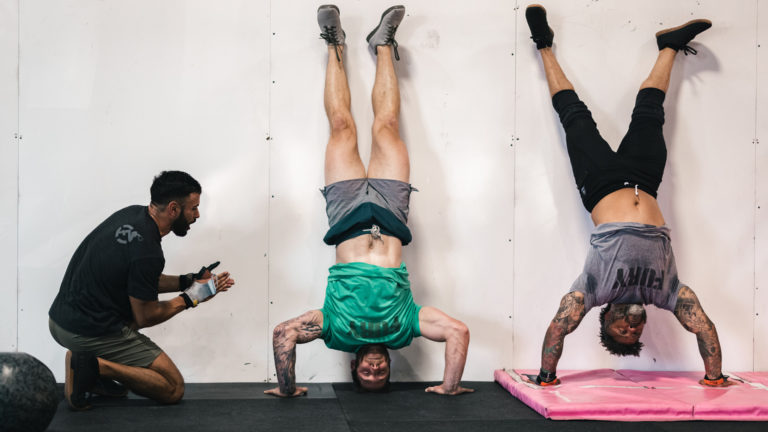 If your athletes have difficulty locking out the last half of pressing movements, this may indicate a weakness in their triceps. Powerlifters have a long-held notion that the triceps are critically important for driving up their bench press, and the same may hold for these movements, which are more commonly found in CrossFit.
If your athletes have difficulty locking out the last half of pressing movements, this may indicate a weakness in their triceps. Powerlifters have a long-held notion that the triceps are critically important for driving up their bench press, and the same may hold for these movements, which are more commonly found in CrossFit.
- Elbows Out Tricep Extensions (Tate Press): Popularized by Dave Tate and Westside Barbell, this movement is notorious for building strength in the lockout position of pressing movements, building mass around the elbows, and developing the medial (long) head of the triceps. This movement can be performed on a flat bench or an incline bench, increasing the stretch of the triceps. The recommendation is to perform 3-4 sets of 8-15 reps with about 60-90 seconds of rest between sets after the daily workout or during the cool-down/skill session if there’s time.
- Standing Dumbbell Overhead Tricep Extension: Yes, this movement works the triceps, but it does so in a manner that puts the shoulder joint into its near end-range of shoulder flexion, which is a similar position found in overhead lifts. In addition to building the triceps in this position, the athlete can focus on maintaining midline stability. This movement may provide a stretch of the lats, triceps, and thoracic spine, aiding in an improved range of motion for overhead lifts and even the front rack position. The recommendation is 3-4 sets of 8-15 reps with about 60-90 seconds of rest between sets after the daily workout or during the cool-down/skill session if there’s time.
- Banded Push-Downs: This exercise is typically performed as a “finisher” at the end of a pushing-intensive workout and is completed for very high-rep sets (30-50 reps). Cue your athletes to keep their elbows pinned to their sides and move at a quick tempo.
- Close-Grip Bench Press or Pin Press: Traditional compound movements can also be altered to bias the triceps. Using a narrow grip on a bench press or performing a pin press (bench or overhead press variation) where the bar starts from a dead stop at the sticking point of the lift will enhance the strength and development of the triceps. These movements can be done heavy with sets in the range of 3-8 reps and are best performed as the main lift or completed immediately after the main lift on a heavy pressing day.
Kipping Pull-ups
 Many of our athletes may need to scale the reps on our conditioning workouts that involve pull-ups to achieve the intended stimulus, particularly for those with a substantial volume of reps. The following exercises are intended to build capacity for upper-body pulling exercises.
Many of our athletes may need to scale the reps on our conditioning workouts that involve pull-ups to achieve the intended stimulus, particularly for those with a substantial volume of reps. The following exercises are intended to build capacity for upper-body pulling exercises.
- Strict Pull-Ups: Encourage your athletes to build their strict pull-up strength to enhance their capacity at kipping pull-ups. Program a mix of challenging sets in the 3- to 5-rep range (add weight if needed) and higher reps sets in the 10-20 range (add a band if needed) for 3-4 sets. If an athlete is still struggling with strict pull-ups, having them perform negative pull-ups or toe-spotted pull-ups for 3- to 5-rep sets is a great starting point.
- Single-Arm Dumbbell Rows: In many strength and conditioning programs, the single-arm dumbbell row is a horizontal pulling exercise staple. This movement is notorious for developing the lats and upper back. Also, it works the shoulder in a large range of motion by allowing the shoulder to protract at the bottom range of motion and retract in the shoulder at the top of the movement. Significant loading can be used with this exercise, so have your athletes load up and hit up 3-4 sets in the 6- to 12-rep range post-workout.
- Banded Pull-Aparts: The band pull-apart targets the muscles of the upper back, such as the posterior deltoids, rhomboids, middle trapezius, and rotator cuff muscles. This movement can help with scapular retraction, which may aid your athletes’ pull-up performance. In addition, it is suggested this movement be performed frequently to counter poor shoulder positions from excessive sitting and poor posture in general. This movement can be performed throughout the day or as part of your warm-up or cool-down for a relatively high number of reps (sets of 20+ reps).
Front Squat or Back Squat – Hips Rising Excessively
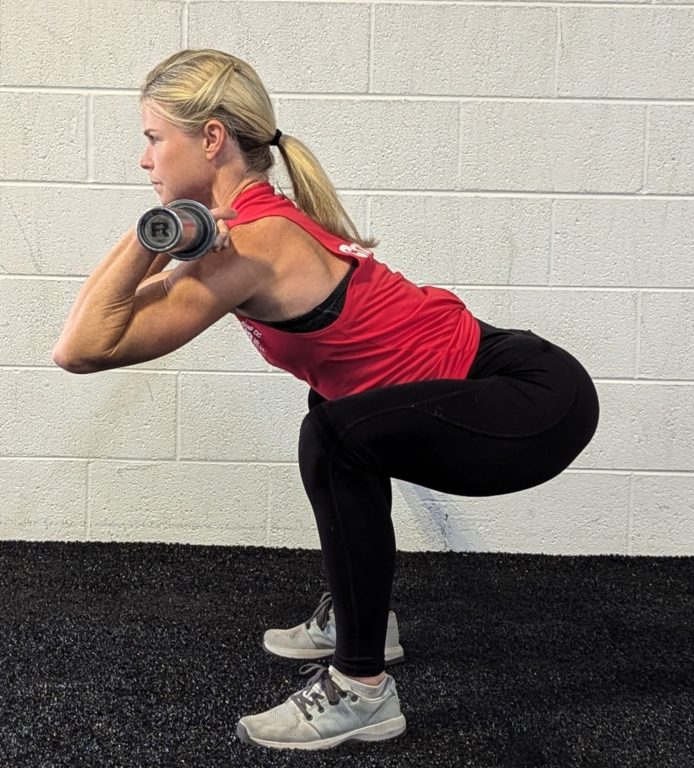 A common inefficiency with front or back squats is when athletes raise their hips significantly faster than their shoulders when starting the upward phase of the squat. This can signify the athlete underutilizing their quads to aid with the lift. Consider the following recommendations.
A common inefficiency with front or back squats is when athletes raise their hips significantly faster than their shoulders when starting the upward phase of the squat. This can signify the athlete underutilizing their quads to aid with the lift. Consider the following recommendations.
- Pause Squats: Consider having athletes perform pause back/front squats to create tension in the bottom of the squat and focus on the shoulders staying tall when initiating the ascent of the movement. Unlike traditional accessory movements where it is recommended to have your athletes perform sets post-workout, the recommendation, in this case, is to include these reps in the 3- to 5-rep range as part of their build-up sets or back-off sets when performing a heavy squat session.
- Rear-Foot Elevated Bulgarian Split Squats (RFEBSS): Some say the best way to execute this movement is to just not do it all! This is largely due to the muscle soreness that commonly occurs in the days following the movement. That said, this movement and other unilateral lower-body exercises can be a viable option to include in your program as accessory work. If your athletes are new to the movement, start conservatively and coach them to leave a few reps in reserve at the completion of each set. When performing this movement to bias slightly toward the quadriceps, athletes will want to utilize a foot placement that allows the knee of their working leg to push forward while still allowing their heel to stay on the ground. To target the quadriceps further, they can elevate their heel on a slant board or plate. A long stance encouraging a more vertical shin angle will bias the movement toward the glutes. When the goal is to target the quads more, I cue my athletes to have a starting foot placement approximately 2-foot lengths away from the rear foot support surface. Performing 2-3 sets of 8-12 reps per leg is the classic recommendation post-workout.
- Heels Elevated Goblet Squats 1.5 reps: Elevating the heel 1-2 inches on a small block or plates will allow athletes’ knees to translate forward to a larger degree while keeping their heels on the ground. Combined with a narrower-than-normal foot placement (hip-width) and a kettlebell in the goblet position, this movement will target the quadriceps to a larger degree. The general recommendation is to perform 2-3 sets of 8-12 reps.
Deadlift – Struggle With the Lockout
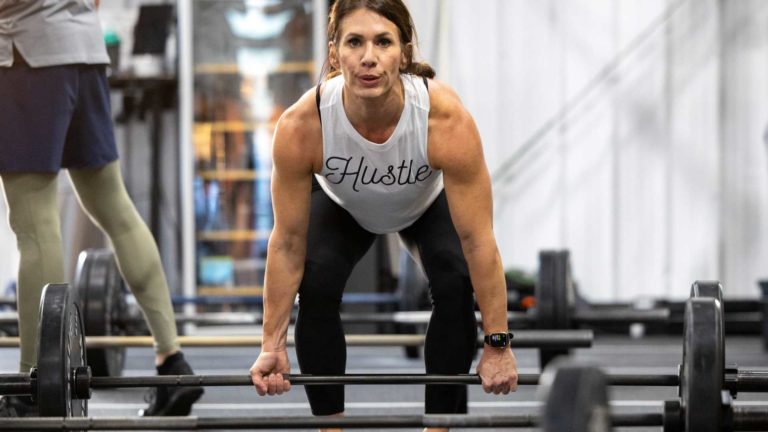 If your athletes struggle with the lockout of their deadlift, it may indicate a weakness in their posterior chain. Beyond that, most athletes will benefit from extra attention placed on the posterior chain in general. The following recommendations consider overall stress on the body; therefore, movements like heavy good mornings, bilateral deadlift variations (e.g., Romanian deadlift), etc., are not included as these exercises can be too demanding in addition to a daily workout.
If your athletes struggle with the lockout of their deadlift, it may indicate a weakness in their posterior chain. Beyond that, most athletes will benefit from extra attention placed on the posterior chain in general. The following recommendations consider overall stress on the body; therefore, movements like heavy good mornings, bilateral deadlift variations (e.g., Romanian deadlift), etc., are not included as these exercises can be too demanding in addition to a daily workout.
- Glute-Ham Raise: Glute-ham raises are performed on the GHD and target the hamstrings to create knee flexion while maintaining extension throughout the hips. This movement does a fantastic job of strengthening the posterior chain with the added benefit of being unloaded (although you can encourage athletes to add weight). This movement is difficult and can be scaled by attaching bands to the apparatus or having a partner assist you through the entire range of motion. Glute-ham raises can be performed multiple times weekly for a few sets of 5-15 reps before or after the main workout.
- GHD Back Extension: The GHD back extension utilizes flexion and extension of the trunk to strengthen the erector musculature with a dynamic movement function. We often avoid this function in workouts, but it can be included in a controlled environment when athletes have the prerequisite strength to do 25 consecutive GHD hip extensions. As strength is developed, this movement can be performed by having athletes hold a medicine ball across their chest. Hitting up 3-4 sets in the 10- to 20-rep range is a great starting point.
- Kickstand Romanian Deadlift (barbell or dumbbells): Having your athletes perform a single-leg Romanian deadlift is also a viable option, as it provides more stability and likely encourages more strength development. When performed correctly and with a controlled tempo, this exercise will strengthen an athlete’s front leg and lengthen the associated musculature. Performing 2-4 sets of 6-12 reps with a controlled eccentric phase following the main session is the general recommendation for this movement.
Toes-to-Bars
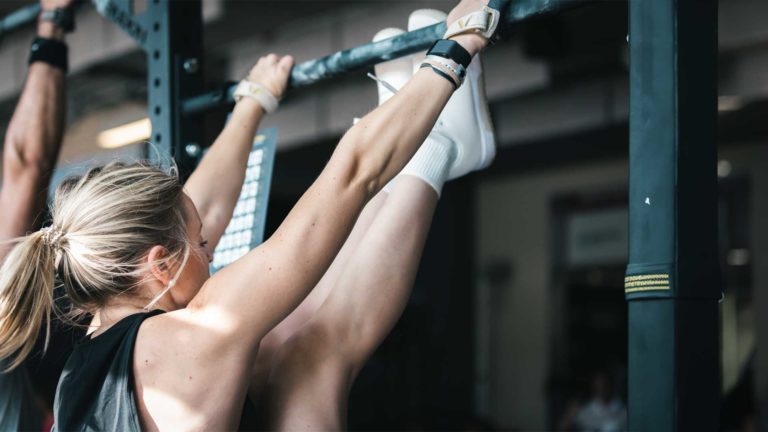 Difficulty stringing together consecutive reps on toes-to-bar is a problem area for many athletes. If flexibility is not an issue, this may indicate weakness in hip flexors, abdominals, and/or lats (for the kipping swing motion).
Difficulty stringing together consecutive reps on toes-to-bar is a problem area for many athletes. If flexibility is not an issue, this may indicate weakness in hip flexors, abdominals, and/or lats (for the kipping swing motion).
- Pike Compressions: This movement is a great accessory exercise for the hip flexors and can be performed before or after workouts. It is simple but surprisingly difficult to perform correctly with hands placed outside and in line or slightly forward of the knees with the shoulders positioned in front of the hips. To reduce the difficulty of this exercise, you can cue your athletes to lean back or perform the movement with one leg at a time. To increase the difficulty, they can perform it from a straddle position.
- L-Sits: The L-sit has been a staple abdominal movement in CrossFit from the very beginning, and it is seen as an integral movement to enhance the development of an athlete’s core. The legs’ posture in the L-sit places an enormous amount of torque about the hip that the abdominals must counteract to keep both the legs up and the spine from hyperextending. The exercise is isometric (it involves no joint movement). Still, those who develop capacity in this movement will likely enhance their ability for toes-to-bars and all other abdominal movements. This movement is also easily scalable to a double- or single-leg tuck variation. Having athletes accumulate 2-3 minutes of total work time is a sound starting point.
- Hollow Body Banded Press-Down: Weakness in the lats or lack of “straight arm” strength can be an issue on toes-to-bar due to the demand of this capacity during the backswing of the kipping motion. Therefore, coaching athletes to add a straight-arm press-down element can be a viable option for enhancing their toes-to-bar both from a strengthening standpoint and skill development. There are a variety of press-down variations that could be included. The hollow body position has some skill transfer to the toes-to-bar (as well as a bar muscle-up). This exercise can be performed for high reps or a designated time during the warm-up or cool-down.
Implementation
Adding accessory work one to two days per week is a great option. From there, consider progressing your athletes week over week. Proper placement of accessory movements will be a variable to consider when programming for your athletes so you avoid movement redundancy on consecutive days. Failure to consider this factor could lead to overuse issues and possible injuries for your athletes.
Sample – Two Weeks for Upper-Body Pulling Focus
Week 1
Day 1
3 sets of 5 weighted strict pull-ups
Day 2
4 sets of 8-12 single-arm dumbbell rows
Week 2
Day 1
3 sets of 40 band pull-aparts
Day 2
3 sets of 5 weighted pull-ups (increase load from Week 1)
about the author
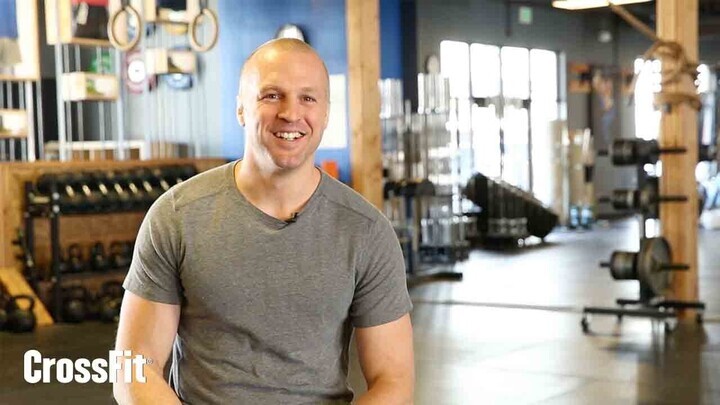 Eric O’Connor is a Content Developer and Seminar Staff Flowmaster for CrossFit’s Education Department and the co-creator of the former CrossFit Competitor’s Course. He has led over 400 seminars and has more than a decade of experience coaching at a CrossFit affiliate. He is a Certified CrossFit Coach (CF-L4), a former Division 1 collegiate wrestler, and a former CrossFit Games athlete.
Eric O’Connor is a Content Developer and Seminar Staff Flowmaster for CrossFit’s Education Department and the co-creator of the former CrossFit Competitor’s Course. He has led over 400 seminars and has more than a decade of experience coaching at a CrossFit affiliate. He is a Certified CrossFit Coach (CF-L4), a former Division 1 collegiate wrestler, and a former CrossFit Games athlete.
Accessory Work in CrossFit Part 2: Common Weak Movements and Exercises to Improve Them